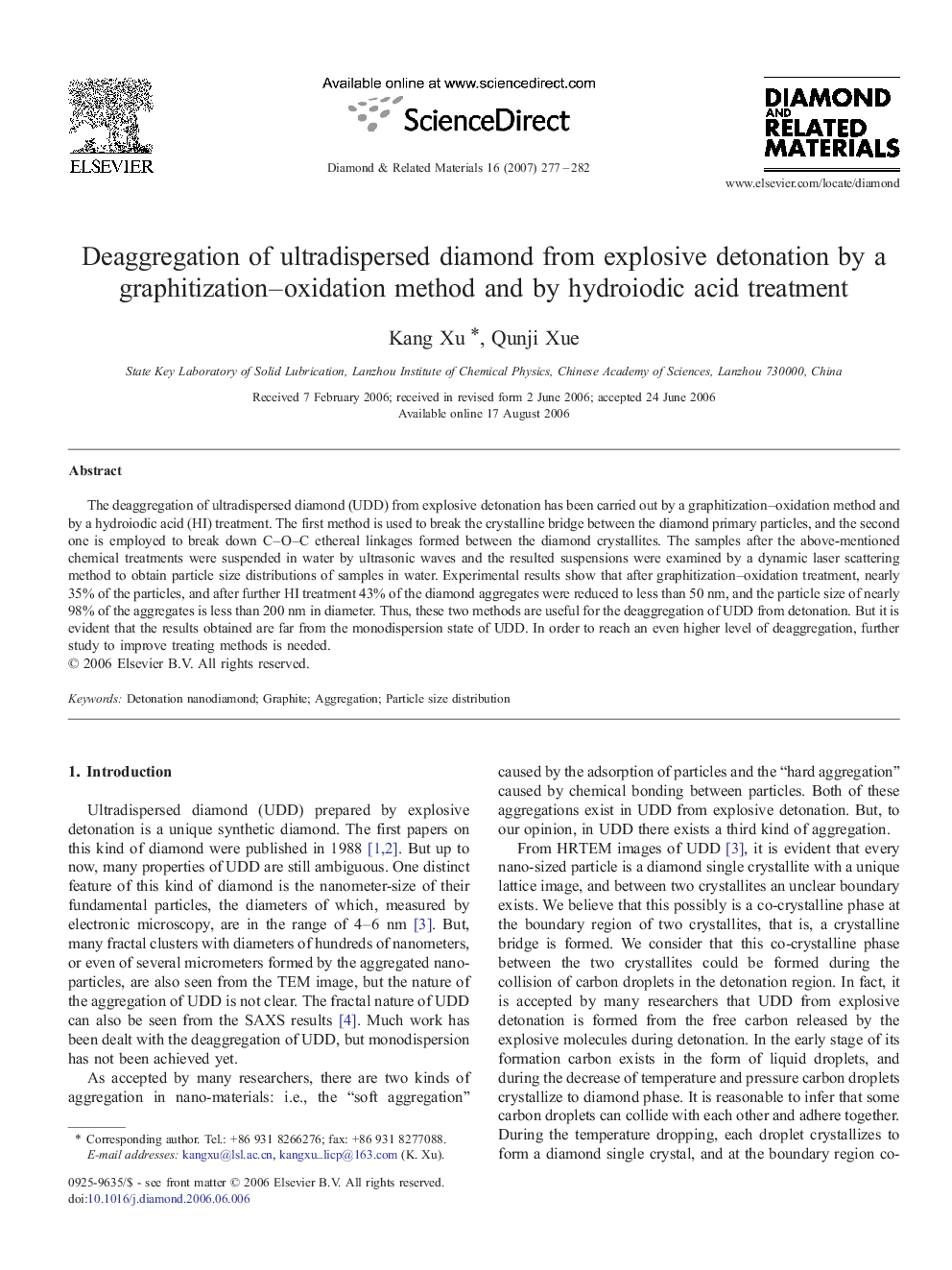| Article ID | Journal | Published Year | Pages | File Type |
|---|---|---|---|---|
| 702988 | Diamond and Related Materials | 2007 | 6 Pages |
The deaggregation of ultradispersed diamond (UDD) from explosive detonation has been carried out by a graphitization–oxidation method and by a hydroiodic acid (HI) treatment. The first method is used to break the crystalline bridge between the diamond primary particles, and the second one is employed to break down C–O–C ethereal linkages formed between the diamond crystallites. The samples after the above-mentioned chemical treatments were suspended in water by ultrasonic waves and the resulted suspensions were examined by a dynamic laser scattering method to obtain particle size distributions of samples in water. Experimental results show that after graphitization–oxidation treatment, nearly 35% of the particles, and after further HI treatment 43% of the diamond aggregates were reduced to less than 50 nm, and the particle size of nearly 98% of the aggregates is less than 200 nm in diameter. Thus, these two methods are useful for the deaggregation of UDD from detonation. But it is evident that the results obtained are far from the monodispersion state of UDD. In order to reach an even higher level of deaggregation, further study to improve treating methods is needed.
